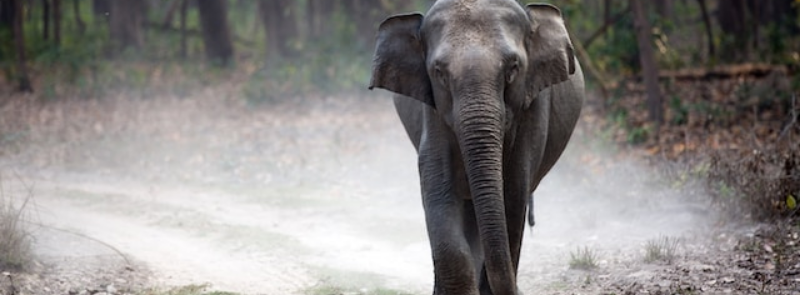
When It Occurs
Every October 2nd to 8th
Timeline
Days Passed (773)
# Hashtags
#WildLifeWeek #PromotingConservation
Wildlife Week is an annual event celebrated in India from October 2nd to October 8th to raise awareness about the importance of wildlife conservation and protection of natural habitats. It aims to educate the public, especially young people, about the importance of preserving the country’s rich biodiversity. The event has been observed since 1952 and is coordinated by the National Board of Wildlife under the Ministry of Environment, Forest, and Climate Change.
Objectives of Wildlife Week
-
Promoting Conservation: The main aim is to foster a greater understanding of the need to conserve wildlife and their ecosystems, as India's flora and fauna are under threat due to habitat destruction, poaching, pollution, and climate change.
-
Raising Awareness: Wildlife Week educates the public on the importance of maintaining ecological balance, the benefits of biodiversity, and the role wildlife plays in human well-being.
-
Community Participation: The event encourages local communities, schools, colleges, and NGOs to participate in various activities, aiming to engage citizens in wildlife conservation efforts.
-
Policy Advocacy: It serves as a platform to highlight governmental and non-governmental efforts in wildlife protection and to advocate for stronger environmental laws and regulations.
Activities and Events
During Wildlife Week, a variety of activities and programs are organized across the country, including:
-
Wildlife Safaris and Nature Walks: Wildlife sanctuaries, national parks, and zoos host safaris and nature walks to allow people to experience the country’s diverse wildlife in its natural habitat.
-
Conservation Workshops and Seminars: Experts, scientists, and environmentalists conduct workshops and seminars on topics related to wildlife conservation, biodiversity, endangered species, and the importance of protecting natural resources.
-
School and College Competitions: Many schools and colleges organize events like poster-making competitions, quizzes, debates, essay writing, and painting competitions to engage students in understanding wildlife issues.
-
Exhibitions and Film Screenings: Wildlife exhibitions, photo galleries, and documentary screenings on Indian wildlife and conservation efforts are often arranged to raise awareness.
-
Rallies and Awareness Campaigns: Public rallies and awareness campaigns are organized by environmental organizations, local communities, and government bodies to spread the message of wildlife protection.
Wildlife in India
India is one of the megadiverse countries in the world, with an incredibly rich variety of species, including:
-
Endangered Species: Several animals in India are classified as endangered, including the Bengal tiger, Asian elephant, Indian rhinoceros, Snow leopard, and Great Indian bustard.
-
Protected Areas: India has over 100 national parks and more than 500 wildlife sanctuaries. Some prominent national parks include Jim Corbett National Park, Kaziranga National Park, and Sundarbans National Park, each home to unique and endangered species.
Key Government Initiatives for Wildlife Conservation
-
Project Tiger (1973): Launched to protect the Bengal tiger population in India, this initiative has been one of the most successful conservation efforts in the country.
-
Project Elephant (1992): Focused on conserving elephants and their habitats, Project Elephant aims to protect migration corridors and reduce human-elephant conflict.
-
Wildlife Protection Act (1972): This landmark legislation provides the legal framework for wildlife protection, including the establishment of protected areas and regulation of hunting and poaching activities.
-
National Wildlife Action Plan (2017-2031): The current action plan focuses on integrating climate change adaptation, protection of marine biodiversity, and promoting ecotourism as a means of raising awareness and funding for conservation.
-
Biodiversity Act (2002): This law aims to conserve biological diversity, promote sustainable use of resources, and ensure fair sharing of benefits from biological resources.
Threats to Wildlife in India
-
Habitat Loss: Rapid urbanization, deforestation, agricultural expansion, and infrastructure projects have led to the shrinking of natural habitats for many species.
-
Poaching and Illegal Trade: India faces serious challenges with illegal poaching and wildlife trade, especially involving animals like tigers, rhinos, and elephants, whose body parts are highly valuable on the black market.
-
Human-Wildlife Conflict: As habitats shrink, animals are forced to venture into human-dominated areas, leading to increased conflict, particularly with species like elephants and leopards.
-
Climate Change: Changing climate patterns, such as altered monsoons and rising temperatures, have impacted ecosystems and the survival of many species in India.
Impact and Importance of Wildlife Week
-
Public Engagement: Wildlife Week helps generate public interest in environmental issues and conservation efforts, bridging the gap between scientific communities and the general public.
-
Increased Participation: The event has led to increased participation in conservation activities, both at the individual and community levels. Many people have adopted more eco-friendly lifestyles, reducing their environmental footprint.
-
Strengthening Policy: Discussions and campaigns during Wildlife Week often lead to stronger advocacy for wildlife protection policies and better enforcement of existing laws.
-
Youth Involvement: Engaging young people through educational programs and activities helps build the next generation of conservationists and environmental advocates.
Conclusion
Wildlife Week is a crucial event in India’s conservation calendar, fostering awareness, education, and action around the country’s rich biodiversity and wildlife. It plays an essential role in building a culture of conservation and encouraging collective responsibility for protecting the natural environment for future generations. Through community participation, educational activities, and advocacy, the week helps strengthen India’s commitment to safeguarding its wildlife heritage.


